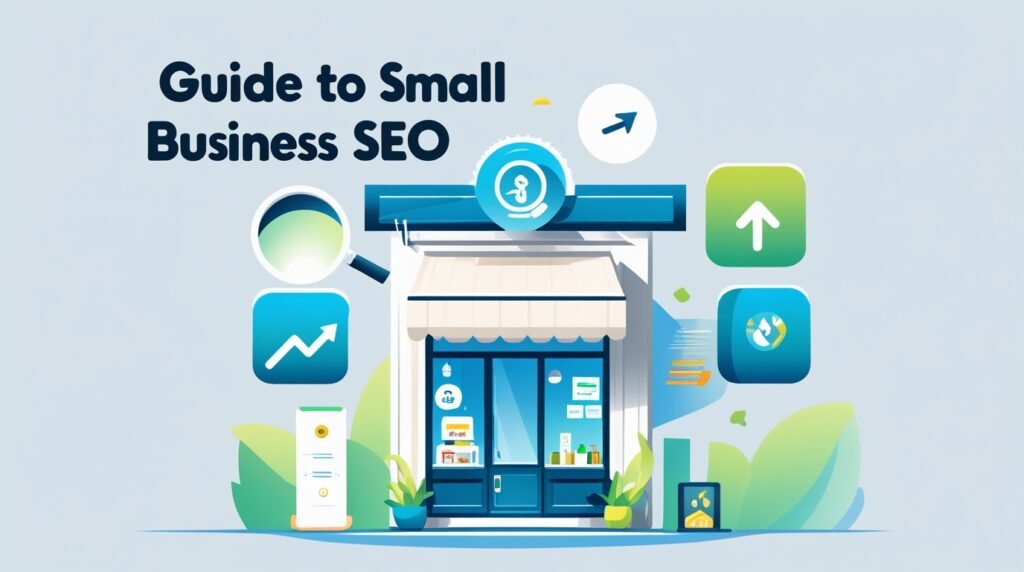Austin is full of thriving small businesses, but if no one can find you online, you’re invisible. Local SEO is the key to showing up when potential customers search for services like yours. In a competitive city like Austin, ranking high on Google can make or break your success.
With over ten years of experience, I’ve helped businesses from humble startups to established names get noticed online. I’ve seen firsthand how the right SEO strategy can turn a slow day into a rush of customers.
In this post, you’ll learn the local SEO tactics that actually work in Austin. Expect practical advice, no fluff, just what gets results.
Why Your Austin Business Can’t Afford to Ignore Local SEO
Let’s be real. The Competition (and yeah, that’s a capital ‘C’ for Austin) is intense. Whether you’re slinging BBQ, coding the next big app, or offering essential home services, someone else in the 512 area code is doing something similar. Just having a great product or service isn’t enough anymore. You need to be discoverable.
This is where SEO shines. Unlike shouting into the void with traditional ads, SEO connects you with potential customers at the exact moment they are searching for solutions you provide. It drives highly qualified traffic (your ideal Austin customers!) to your digital doorstep – your website. Think about it: someone searching “best vintage shops South Congress” or “emergency AC repair Round Rock” has intent. They’re not passively scrolling; they’re actively looking. Being the business that shows up is powerful.
Often, I hear small business owners comparing SEO to offline marketing or traditional advertising. While those have their place, the ROI (Return on Investment) from a well-executed SEO strategy tends to be significantly better over the long haul. It’s not a fleeting billboard; it’s building a sustainable asset that generates leads and customers continuously. Honestly, I view it as a fundamental Business Growth Strategy for any modern Austin business.
Beyond just leads, good SEO builds Credibility and Trust. Appearing high in search results signals authority to potential customers. It contributes massively to your online presence enhancement. Remember the Etymology – Search Engine Optimization. It’s about making your online presence the best, most helpful, and most visible version it can be for local searchers. In Austin’s savvy market, skipping SEO is like opening a food truck without telling anyone where you parked it.
Decoding the Buzzwords: Essential SEO Concepts Explained
Okay, “SEO” gets thrown around a lot. Let’s quickly break down what SEO (Search Engine Optimization) actually involves. It’s not magic (though sometimes good results feel like it!), but a collection of practices designed to improve your website’s visibility in organic (non-paid) search engine results. Here are the essential parts of the whole:
- On-page optimization: This is everything you directly control on your website. Think keyword usage in your text, title tags, meta descriptions, header tags (like the H2s and H3s in this article!), image alt text, and the quality and relevance of your content itself.
- Off-page optimization: This involves building your site’s authority and reputation off your actual website. The big players here are earning backlinks (links from other reputable websites to yours) and managing local citations (mentions of your business Name, Address, and Phone number – NAP – on directories like Yelp, etc.). It’s like getting votes of confidence from around the web.
- Technical SEO: This is the foundation – ensuring your website is built in a way that search engines can easily crawl, understand, and index. Key aspects include site speed, mobile-friendliness (absolutely critical!), site architecture, security (HTTPS), and using structured data (Schema markup).
- Local SEO: This is a subset of SEO, but for businesses targeting a specific geographic area like Austin, it’s arguably the most important piece. It combines elements of all the above but with a laser focus on ranking in localized search results, including the coveted Google Map Pack. This is where Austin small business SEO truly lives.
It’s also worth distinguishing SEO from Search Engine Marketing (SEM). SEM is the broader category that includes both SEO (organic traffic) and PPC (Pay-Per-Click advertising, like Google Ads). They often work best together, but SEO focuses on earning visibility, while PPC involves paying for it directly.
Your Action Plan: A Step-by-Step Guide to Austin Small Business SEO
Alright, theory’s great, but let’s get practical. How do you actually do SEO for your Austin small business? Here’s a step-by-step action plan:
Finding Your Audience: Hyper-Local Keyword Research Austin
Everything starts here. You need to understand what terms your potential Austin customers are actually typing into Google. This is the cornerstone of keyword research Austin. Don’t just guess!
- Tools: Use tools like Google Keyword Planner (free!), SEMrush, Ahrefs, or Moz Keyword Explorer (these often have free trials or limited free use – they are powerful semantically related entities in the SEO world).
- Think Local: Go beyond generic terms. Instead of “bakery,” target “sourdough bread East Austin” or “custom cakes 78704.” Instead of “IT support,” think “small business IT services Cedar Park.” Include Austin landmarks or neighborhoods where relevant (“coffee shop near Zilker Park”).
- Consider Intent: Are searchers looking to buy something (“emergency plumber Austin”), learn something (“how to choose a real estate agent in Austin”), or find a location (“brewery South Lamar”)? Tailor your content accordingly.
- Personal Insight: “I often see businesses targeting terms that are too broad or have massive competition. Getting specific and local (that crucial lexical term!) is where small businesses can win. Don’t be afraid to target longer, more specific phrases (long-tail keywords).”
Polishing Your Online Curb Appeal: On-Page Optimization
Once you know your keywords, you need to weave them naturally into your website. This is on-page optimization.
- Content is King (Still!): Create high-quality, engaging content (a key meronym) that answers your customers’ questions and showcases your expertise. Think blog posts (“Top 5 Dog-Friendly Patios in Austin”), service pages detailing what you offer in Austin, neighborhood guides, case studies. Make it valuable for Austinites.
- Strategic Keyword Placement: Include your target keywords naturally in:
- Title Tags (the blue link in search results)
- Meta Descriptions (the snippet below the title tag – make it compelling!)
- Header Tags (H1, H2, H3s – helps structure content)
- Body text
- Image Alt Text (describe the image, e.g., “Happy customer enjoying tacos at [Your Restaurant Name] Austin”).
- Website Design Matters: Good Austin web design SEO isn’t just about looks; it’s about usability and ensuring search engines can crawl it easily. A poorly built site can kill your SEO efforts.
- Internal Linking: Link relevant pages on your site together. For example, a blog post about “Choosing a Roofing Material in Central Texas” should link to your “Austin Roofing Services” page.
Planting Your Flag: Google Business Profile (GBP) Domination
For local SEO, your Google Business Profile (formerly Google My Business Austin, but now just GBP) is non-negotiable. It’s often the first impression customers have, especially in the Google Map Pack.
- Claim & Verify: Find your listing on Google (the most important semantically related entity here) or create one, and get it verified.
- Complete Optimization is Key (Austin GMB optimization): Fill out every single section accurately and thoroughly:
- Business Name, Address, Phone (NAP – MUST match everywhere else!)
- Categories (be specific!)
- Service Areas (if applicable)
- Hours of Operation (keep updated!)
- Services/Products (detail what you offer)
- Attributes (wheelchair accessible, free Wi-Fi, Black-owned, etc.)
- Photos & Videos (showcase your business!)
- Google Posts (share updates, offers, events)
- Q&A Section (proactively answer common questions)
- Reviews are GOLD: Encourage happy customers to leave Google reviews and respond to all reviews (good and bad). This builds trust and provides valuable feedback.
- Crucial Tip: That NAP (Name, Address, Phone) consistency I mentioned? It’s paramount. Make sure it’s identical across your website, GBP, and all other online directories. Even small variations (like “St.” vs. “Street”) can confuse search engines. This is a fundamental common attribute of local SEO success.
Building Your Local Reputation: Citations & Link Building
Off-page SEO is about building authority and trust signals away from your website.
- Local Citation Building Austin: Get your business listed accurately on relevant online directories. Think beyond just Google. Key players include Yelp, Apple Maps, Bing Places, and industry-specific directories (e.g., TripAdvisor for restaurants, Avvo for lawyers). Don’t forget local Austin-specific directories or lists from the Austin Chamber of Commerce or local Austin blogs/publications. Consistency (that NAP again!) is vital.
- Local Link Building Austin: This involves earning links from other reputable websites to your website. Think of these as votes of confidence. How do you get them in Austin?
- Sponsor a local event or charity.
- Partner with complementary (non-competing) local businesses.
- Get featured in local news or blogs (Austin Chronicle, CultureMap Austin, etc.).
- Join local business associations.
- Create amazing local content that others want to link to.
- My two cents: “Effective local link building takes time, effort, and relationship building. It’s not about quantity, but quality and relevance. A link from a well-respected Austin organization is worth far more than dozens of spammy links. Be patient and persistent.”
Under the Hood: Essential Technical SEO
Don’t let the word “technical” scare you. Technical SEO ensures your website provides a good experience for both users and search engine crawlers.
- Mobile-First: Your site must work flawlessly on smartphones and tablets. Google primarily uses the mobile version of your site for indexing and ranking.
- Site Speed: Slow sites frustrate users and hurt rankings. Aim for fast loading times. Google’s Core Web Vitals are key metrics here, impacting User experience (UX) signals.
- Schema Markup: Implement Schema markup (code from Schema.org) to help search engines understand your content better. LocalBusiness schema is particularly important for telling Google about your location, hours, etc.
- Security: Use HTTPS (SSL certificate) to secure your website. It’s a requirement now and builds user trust.
- Easy Navigation: Make sure users (and search engines) can easily find their way around your site.
- “Honestly, technical SEO can feel overwhelming, but focusing on a clean design, fast loading, and mobile-friendliness covers the most critical bases for small businesses.”
Knowing What Works: Analytics and Reporting
How do you know if any of this is actually working? By tracking your results!
- Set up Google Analytics & Google Search Console: These free tools are essential Analytics and reporting platforms.
- Analytics shows you how people are finding and interacting with your site (traffic sources, popular pages, user behavior).
- Search Console shows you how Google sees your site (keywords you rank for, technical issues, clicks, impressions).
- Track Your Rankings: Monitor your SEO ranking for your target local search ranking Austin keywords. Are you moving up? (Use tools or manual checks).
- Monitor Key Metrics: Keep an eye on organic traffic (visits from search engines), bounce rate, time on site, and most importantly, conversions (leads, calls, form submissions).
- Connect to Goals: Ultimately, SEO should contribute to Lead Generation and business growth. Track how many inquiries or sales originate from your organic search traffic. This helps demonstrate ROI.
DIY SEO vs. Hiring the Pros: Choosing Your Austin SEO Path
Now, the big question: should you tackle this yourself or hire help?
- DIY SEO:
- Pros: Can be more affordable SEO Austin initially, you learn a lot about your online presence.
- Cons: Steep learning curve, very time-consuming, easy to make costly mistakes, hard to keep up with constant algorithm changes.
- Hiring an Austin SEO Agency/Consultant:
- Pros: Access to expertise, specialized tools (SEMrush, etc.), saves you time, typically faster SEO results, experience navigating the competitive Austin landscape. A good agency starts with an SEO audit.
- Cons: Costs money (view it as an investment), need to find a trustworthy partner.
- What to look for in Austin SEO Services: Look for transparency, clear communication, realistic promises (no guarantees!), case studies of local success, and a focus on ethical (“white-hat”) SEO. Do they understand the Austin market?
- Red Flags: Guaranteed #1 rankings (impossible!), overly cheap packages, lack of reporting, focus on spammy tactics.
- Acknowledging the small business reality: Budgets are often tight (common attribute). Start where you can – maybe optimizing your GBP yourself is step one. But don’t underestimate the value of expert help.
- Opinion: “For serious, sustainable growth (that lovely connotation) in a competitive market like Austin, partnering with a dedicated SEO expert or agency (those useful collocations) who gets the nuances of local SEO often provides the best long-term value. If you do DIY, commit to continuous learning.”
Leveling Up: Advanced & Unique Austin SEO Tactics
Once you’ve nailed the basics, you can explore some more advanced or uniquely Austin strategies.
- Leverage Unique Austin Attributes:
- Does the “Keep Austin Weird” vibe fit your brand? (Unique attribute) If so, weave it into your content and tone authentically. Don’t force it if it doesn’t fit!
- Tap into Austin’s identity: Are you near a famous music venue? Cater to the tech crowd? Mentioning relevant local culture can resonate. The polysemy of “Austin” means it’s more than just a location; it’s a culture.
- Target specific Austin demographics/industries: Tailor content and keywords for SEO for Austin tech startups, restaurants, musicians, retail shops etc. (specific hyponyms).
- Hyper-Local Targeting: Go beyond just “Austin.” Target specific neighborhoods (“best coffee Mueller Austin”) or zip codes if your service area is limited (rare attribute).
- Voice Search Optimization: People increasingly use voice search (“Hey Google, find pizza near me”). Optimize for conversational queries and questions.
- Leverage Local Events: Create content around major Austin events like SXSW or ACL Fest if it’s relevant to your business (e.g., “Where to Eat Near ACL Fest,” “SXSW Networking Tips for Startups”). Use this judiciously (rare attribute).
Frequently Asked Questions (FAQs)
Let’s tackle some common questions I hear from Austin business owners:
Q1: How long until I see SEO results (collocation) in Austin?
A: Patience is key! SEO is a marathon, not a sprint. You might see some movement (especially with GBP optimization) in a few weeks or months, but significant, stable rankings often take 6-12 months or longer, especially in competitive Austin niches. It’s an ongoing Investment, not a quick fix. Factors like competition, your starting point, and the consistency of your efforts play a huge role.
Q2: What’s the typical cost for small business SEO (collocation) services in Austin?
A: Costs vary widely based on the scope of work, your industry’s competitiveness, and the agency’s expertise. Monthly retainers can range from a few hundred dollars (for very basic services, be wary) to several thousand dollars for comprehensive SEO campaigns. Project-based work like an SEO audit will have different pricing. Focus on value and ROI, not just the cheapest option. Affordable SEO Austin doesn’t always mean effective SEO.
Q3: Can I just do Google Business Profile management (meronym) and skip the rest?
A: While optimizing your GBP is critical and offers high impact for local visibility, it’s only one piece of the puzzle. True SEO dominance requires a holistic SEO strategy that includes on-page optimization, quality content, link building, and technical health. Relying solely on GBP leaves potential rankings and traffic on the table. Think of GBP as your storefront sign; the rest of SEO is building the roads that lead to it and making the store itself amazing.
Q4: Is SEO better than PPC/Paid search (antonyms) for my Austin business?
A: They serve different purposes and often work best together as part of a broader SEM (Search Engine Marketing) strategy. PPC delivers immediate traffic and is great for testing keywords or promotions, but you pay for every click, and traffic stops when you stop paying. SEO builds organic, sustainable traffic over time, offering better long-term ROI, but it takes longer to see results. Many Austin businesses benefit from using both.
Q5: What’s the biggest Austin small business SEO mistake you see?
A: Personal Insight: Honestly, there are a few common ones, but two stand out: 1) Grossly inconsistent NAP information across different online platforms it confuses Google and hurts local rankings. 2) Completely neglecting local link building thinking that just optimizing their own site and GBP is enough. Earning those local votes of confidence is crucial for authority in a crowded market like Austin.
Conclusion
Whew! We’ve covered a lot of ground, from the foundational ‘why’ to the nitty-gritty ‘how’ of Austin small business SEO. In a city as vibrant, dynamic, and yes, competitive as Austin, simply having a great business isn’t enough to guarantee success online. You need to be visible where your customers are looking.
Mastering local SEO focusing on local marketing strategies like keyword research tailored to Austin, optimizing your Google Business Profile, building local citations and links, and ensuring your website offers a great experience is no longer optional. It’s how you increase traffic to Austin business, build credibility, and ultimately, drive real Growth (that wonderful connotation we’re all aiming for).
Remember the key takeaways:
- Local focus is paramount. Think Austin, think neighborhoods, think like your local customer.
- Consistency is crucial (NAP, content creation, optimization efforts).
- Patience is required; SEO is a long-term investment.
Yes, it takes effort. Yes, the landscape of search engines like Google and Bing is always evolving. But the potential rewards of connecting with more local customers, growing your reputation, and thriving in the unique Austin business ecosystem are immense. Effective digital marketing Austin starts with a solid SEO foundation.So, don’t just keep Austin weird; keep Austin wired by making sure your small business can be found online. Start optimizing today your future Austin customers are searching for you right now.




